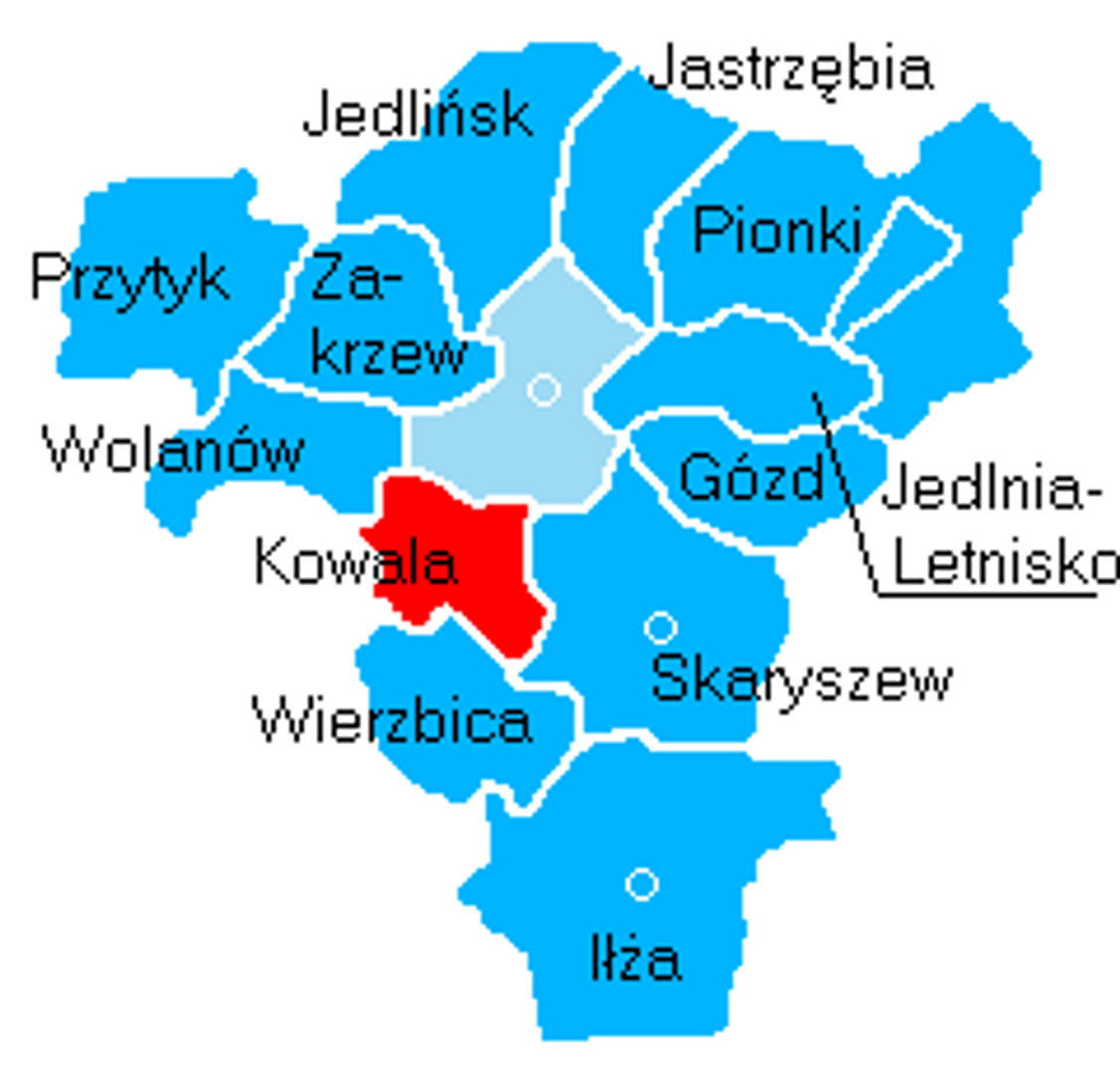Kowala
7.65

Overview
Kowala, a rural commune in the Masovian Voivodeship, Radom County, boasts a rich history dating back to pre-Piast times. The first recorded mention of the village comes from 1325, and these lands were part of the Radom Castellany. The commune developed intensively in the 14th and 15th centuries, with new settlements emerging thanks to colonization by knightly families, which led to the clearing of the Radom Wilderness. During this period, local parishes gained importance, and the commune did not suffer significant damage after the Swedish Deluge. In the 18th century, despite wars, a slight economic revival occurred.
Following the partitions and the introduction of reforms in the 19th century, the commune became part of the state administrative structures, resulting in the establishment of the collective commune Kowala-Stępocina in 1867. Over the next century, the commune oscillated between various administrative frameworks, experiencing changes in territorial division after World War II.
Modern-day Kowala covers an area of 74.71 km² and is inhabited by approximately 12,247 people, with agricultural land predominating (87%). The commune is dynamically developing and comprises numerous village administrations (sołectwa), such as Bardzice, Dąbrówka Zabłotnia, and Kosów. An interesting fact is that in 1921, the commune had the highest percentage of Evangelical population in Radom County. Bordering Radom, Kowala benefits from its proximity to the city while preserving its rural identity and traditions.
Location
2025 Wizytor | All Rights Reserved